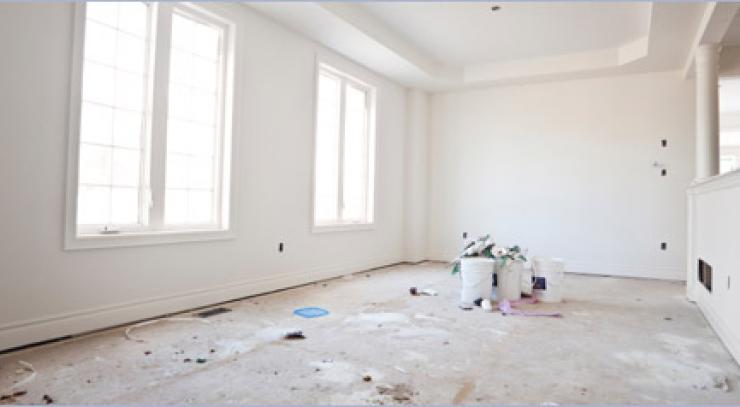The importance of good design in healthcare cannot be overstated and there’s a growing body of research demonstrating that patient outcomes are significantly influenced by the physical setting and environmental quality of a healthcare facility.
Healing architecture is a holistic approach that takes into consideration interior and building design when creating spaces for patients and residents for healing and recovery. A well-designed environment allows medical professionals to make better decisions, the standard of care to rise and patients to heal more quickly.
Healthcare buildings are complex spaces that incorporate high-level technology to fulfil a range of functions. An effective design integrates these functional requirements with the human needs of patients, visitors and staff as well as the complex set of regulations, codes and standards that must be adhered to when designing such buildings.
“Every single element that goes into creating a building, from the raw materials to its structural design, has a sizable impact on the health of its occupants and the surrounding environment,” CSR Gyprock category manager Peter Tollens says.
The current gold standard in healthcare design is an evidence-based methodology that puts the patient at the center of the design process and acknowledges patient responses to their physical environment. Everyone involved in the design process must consider how the materials used within the building shape the patients’ and residents’ experience.
There is an increasing understanding that all the design elements in a building can contribute to a “healing environment” that can improve patient recovery and staff productivity and this includes walls and ceilings.
Here, we will investigate some of the key considerations for modern healthcare environments, incorporating potential wall and ceiling solutions that can help meet a variety of modern design solutions.
Indoor Air Quality
Maintaining adequate indoor air quality is essential to our health and wellbeing. A recent study has highlighted the need for better monitoring of indoor air quality as smoke, fungal spores and chemicals used in certain paints, varnishes and cleaners can lead to poor indoor air quality, which can be more polluted than outside air.
Within healthcare facilities, particle boards, carpets and other building materials, volatile organic compounds (VOCs) can be released into the air that can be inhaled by both patients and staff. Exposure to harmful VOCs can affect the invariably weakened immune systems of patients and cause healthcare professionals to experience headaches, fatigue, dryness and eye and skin irritation.
To minimise such effects, the Green Building Council of Australia (GBCA) Green Star Rating Tools encourage product suppliers, designers and specifiers to use certified low VOC emitting materials and finishes. A great choice is CSR Gyprock’s EC08 plasterboard range which is GECA-certified and has low VOC emissions that make them an ideal choice for applications where maintaining high levels of indoor air quality is important.
Fire Safety
Healthcare buildings are frequented by people with varying degrees of mobility spread out over large, expansive buildings, thus making fire safety among the highest priorities in facility design. To contain the fire in manageable compartments and stop it from spreading in the unlikely event of a fire, passive fire protection must be built into the structure of the building. By creating compartments within a building and separating them from one another with fire-resistant walls, floors and ceilings, the spread of fire within the structure can be controlled.
Durability
The durability of wall and ceiling materials is a key consideration in high-traffic areas such as hospitals. Due to the nature of healthcare facilities, most spaces are subject to heavy use, which can cause serious interior damage to walls. The damage is typically more severe because of a greater movement of mobile equipment in corridors, so walls will generally require greater protection.
In addition, tears, dents and cracks in walls and ceilings can harbour dirt and bacteria, which can spread disease and increase maintenance and cleaning costs. Designers should consider impact-resistant wall sheets or panel protection systems. CSR Gyprock’s new EC08 Extreme is a premium, multi-functional plasterboard which has been engineered for extreme impact, highly suitable for a healthcare setting.
Acoustic Comfort
A big focal point of creating effective healing spaces is the consideration of acoustics, with this aspect of the design impacting patients, residents and staff. Numerous studies show that patients are adversely affected by excess noise while they are hospitalised. The findings of these studies demonstrate how noise exposure affects a variety of physiological and psychological processes, including speech processing, sleep quality, and more, with a good acoustic environment assisting in a patient’s healing process.
In addition, healthcare staff can also suffer negative effects from internal noise levels, with increased levels of stress and fatigue, poor job performance, hearing damage from loud noises, general annoyance and a higher rate of job burnout resulting from a poor acoustic environment.
Acoustic performance of walls and ceilings should be considered in the early design stages of healthcare facilities. The walls, roofs and ceilings services of the building must incorporate solutions to control reverberation, maintain acoustic separation between rooms and minimise the effects of internal and external noise.
“Every component of a healthcare building contributes to the quality of the interior environment. This is particularly true when selecting materials that influence multiple areas in a design. Gyprock’s EC08 Complete is an excellent and versatile choice for a range of applications within a healthcare facility that positively affects acoustic resistance,” Peter says.
Sustainability Concerns
Lastly, apart from the health impacts that design and architecture can have on its occupants, the raw materials chosen will affect the surrounding environment.
Several factors should be considered when assessing the sustainability of building products, including their lifespan, embodied emissions, lifecycle energy consumption, resource use and recycling potential. A lightweight material that lowers transportation expenses and emissions, plasterboard is a highly sustainable product as most of it is recyclable after use. The plasterboard industry also promotes greater recycling by supporting various recycling programs and focusing on resource efficiency in their manufacturing operations.


























